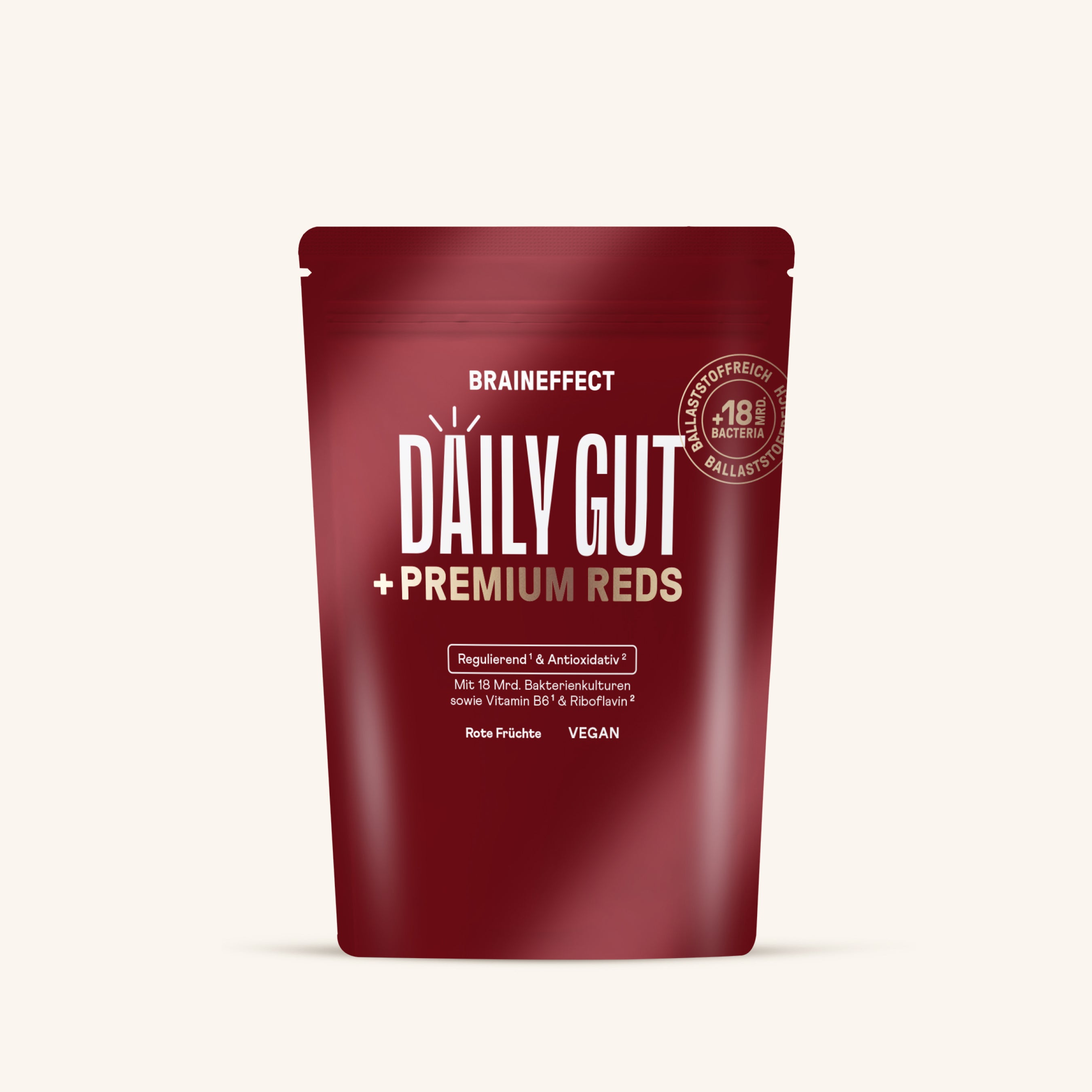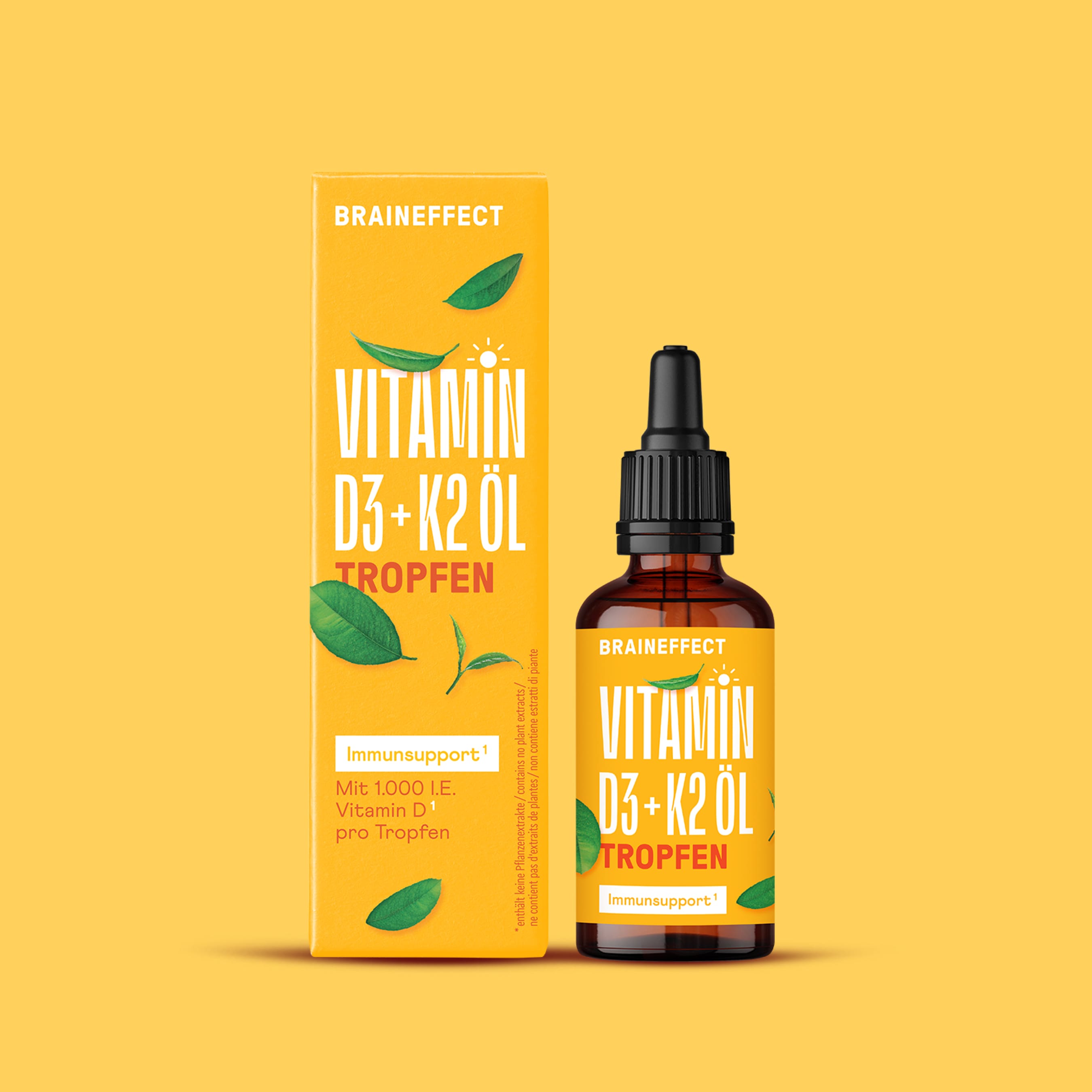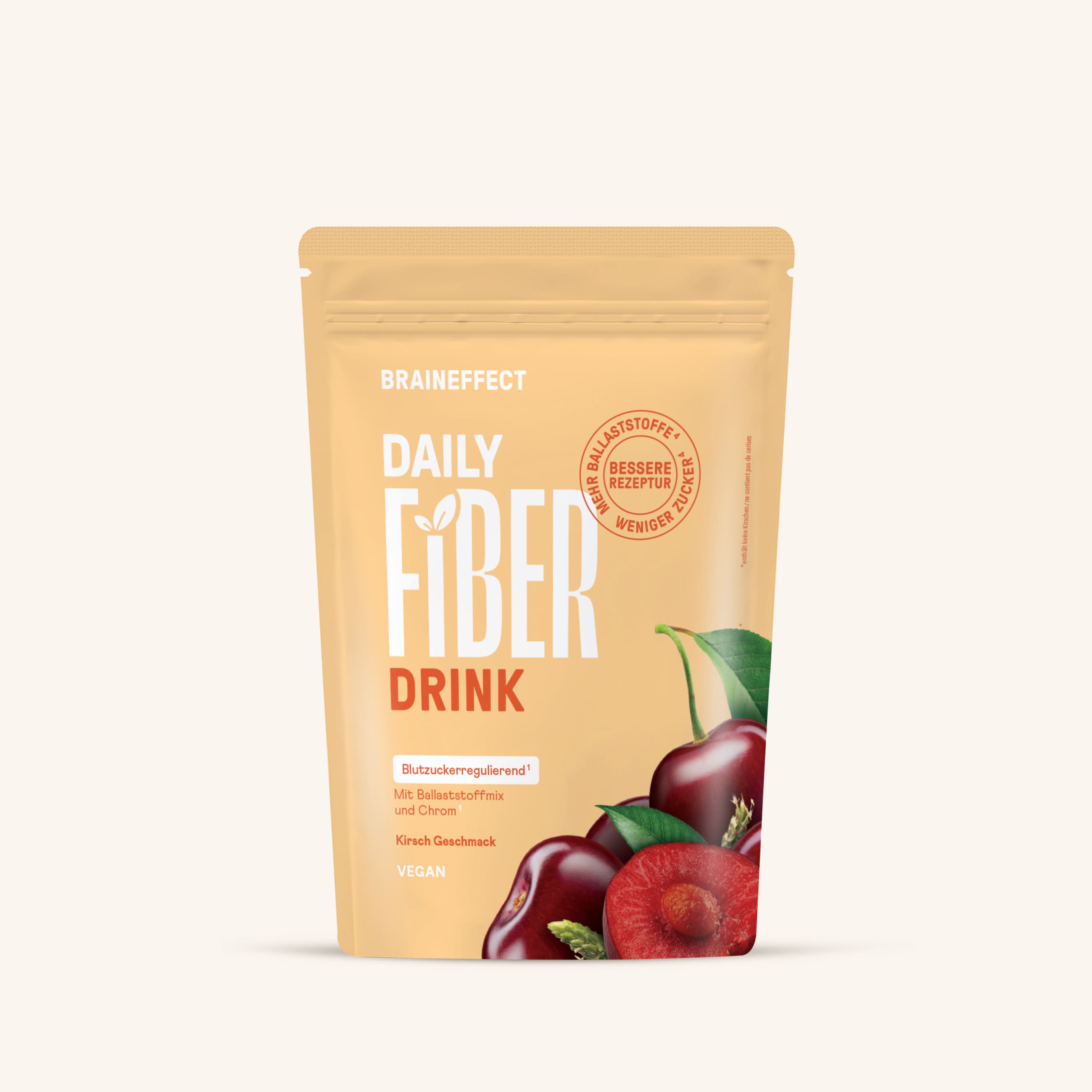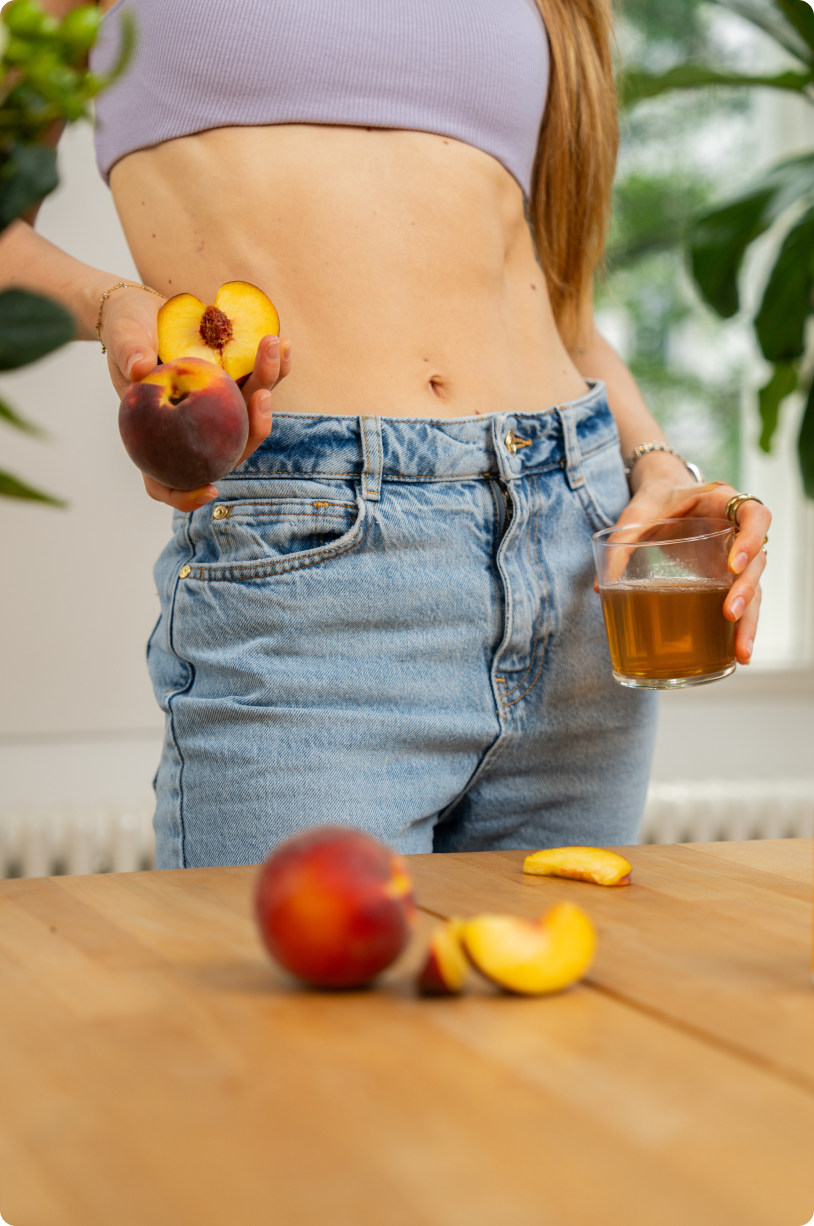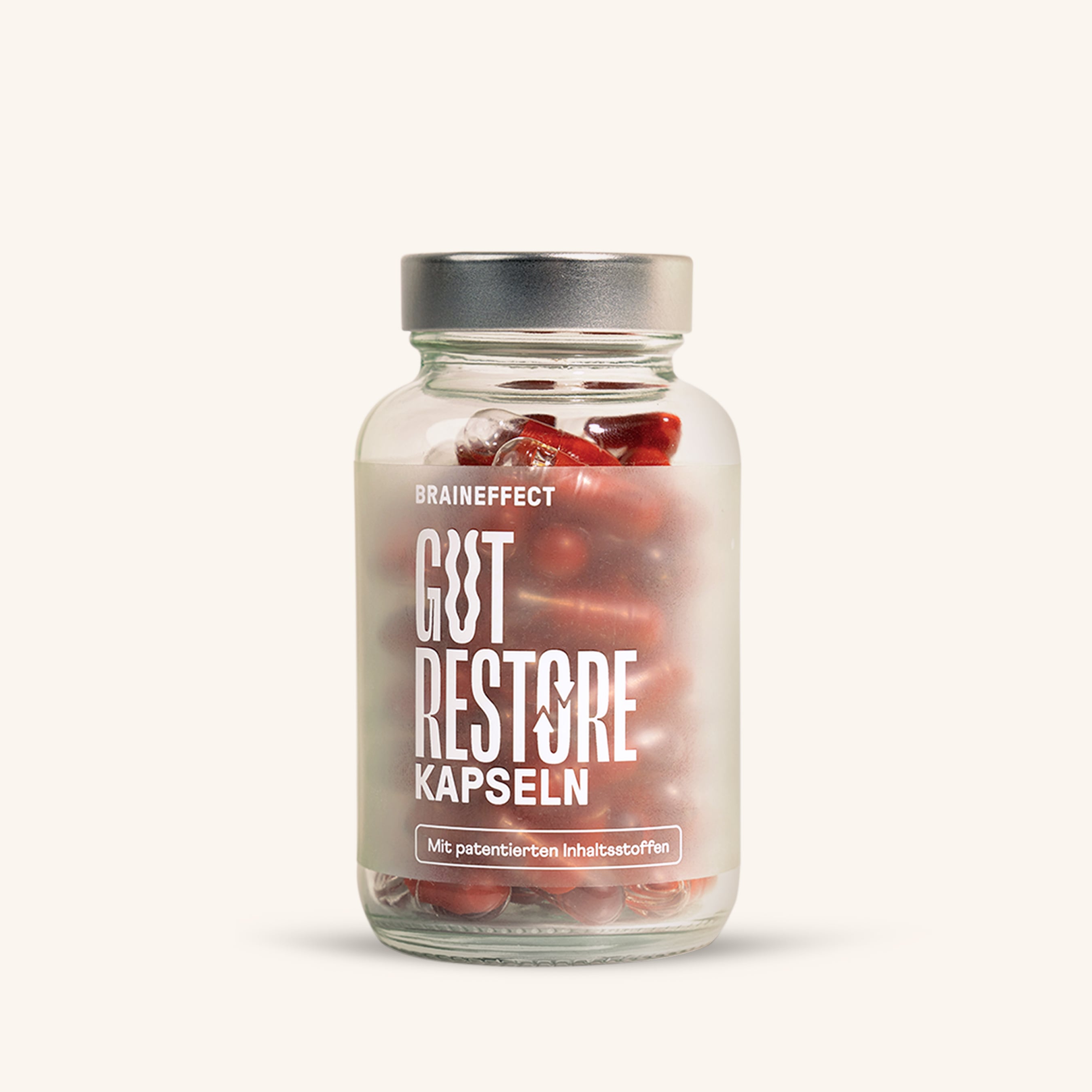Table of contents
1. What is inulin?
To understand what inulin is, we need to go back a bit. Inulin is essentially a dietary fiber that is classified as a prebiotic. It serves as a carbohydrate storage medium for many plant species and is a fructan. Fructans are water-soluble oligo- and polysaccharides that can serve as an energy source for these plant groups.
The good thing about the first-mentioned fibers for us humans is that they are particularly beneficial for digestion. Some time ago, it was believed that these substances exert certain stimuli on the intestines during digestion, thus accelerating digestion. Nowadays, however, the prevailing opinion is that the intake of fiber leads to increased bacterial activity in the intestines, which then accelerates digestion. And that makes sense. After all, when bacteria have food, they can naturally do their work better.
Overall, there are two types of fiber:
-
There are fibers that are water-soluble and can bind large amounts of water in the intestines. Water-soluble fibers are called prebiotics. They are, so to speak, food for our intestinal bacteria, and they include not only oligofructose, but also inulin, which is the subject of this blog post. Prebiotics are used as food by our intestinal bacteria and are then broken down into gases and short-chain fatty acids.
-
On the other hand, there are also insoluble fibers that our intestinal bacteria cannot process so well. These include flaxseed and apple peel, which the body cannot easily digest and therefore excretes.
But fiber isn't just important for our digestion; it's important for another reason as well: If you consume plenty of fiber, you have a significantly reduced risk of many diseases such as high blood pressure, obesity, and even coronary heart disease, as the German Nutrition Society explains. What all these diseases have in common is that they are linked to poor nutrition and, therefore, often to a low-fiber diet.
However, an increased intake of fiber can also be very beneficial for you on another level. It can also keep you feeling fuller for longer, and it also influences your carbohydrate metabolism by lowering your blood sugar levels.
2. Effect of inulin
All of these benefits have led to the fact that you can now buy many products containing inulin. It can be found in various baked goods, juices, and even fitness bars.
Of course, it's always important with dietary supplements that the active ingredients are obtained naturally. And that's exactly the case with inulin. It's extracted from chicory and the Jerusalem artichoke, among other plants. Inulin is also produced from chicory, which is essentially the precursor to chicory, which was cultivated as a vegetable from chicory.
Inulin has many different properties that can be beneficial for you. Among other things, if you have potential digestive problems, it can help. The European Food Safety Authority estimates the role inulin plays in the intestinal flora, for example, that it can support normal bowel movements and also increase bowel frequency. However, this only applies if you consume at least twelve grams of it daily.
Inulin has the following properties:
-
Taking inulin stimulates digestion and also relieves constipation. It binds to fluids and swells, activating bowel movements. This ensures regular bowel movements.
-
It can promote healthy intestinal flora. The reason: Your beneficial intestinal bacteria love fructose molecules, from which they derive their energy. This allows the beneficial lactic acid bacteria to spread even further in your intestines, thus eliminating germs that could potentially make you sick.
And now things get really exciting. When inulin is processed in your intestines, it produces, among other things, lactic acid and short-chain fatty acids, which boast the following properties:
-
Short-chain fatty acids are used by intestinal mucosal cells to generate their own energy. This energy is particularly important for intestinal metabolism.
-
The short-chain fatty acids stimulate the regeneration of intestinal mucosal cells. This also allows a thicker mucus layer to develop in the intestine.
-
Ideally, the pH in the intestines should be acidic. This is where short-chain fatty acids come in. They lower the pH and prevent pathogens from settling in your intestines.
-
What's very important about them is that they have anti-inflammatory properties. And inflammation in your gut can be the cause of stomach pain, nausea, fatigue, and even malaise. These short-chain fatty acids can therefore help you feel better in your body overall.
Other effects of inulin that may be particularly beneficial in diabetes:
-
It's low in calories. Although inulin contains plant-based energy in the form of fructose, this can only be processed in the large intestine. Therefore, it has relatively few calories.
-
When inulin swells, you also feel fuller for longer. It can therefore also have a positive effect, especially if you're on a diet and want to pay more attention to your food intake.
-
Inulin also affects your blood sugar levels, making them somewhat more stable. This is because other nutrients are absorbed more slowly.
3. Side effects of inulin
Overall, inulin cleans up your gut by providing food for the good bacteria in your gut. However, consuming foods containing inulin can also lead to side effects under certain circumstances. For example, if you have an irritated or generally sensitive gut, it can cause flatulence or diarrhea. The reason for this is that the gut bacteria become particularly active during fermentation, i.e., the conversion into acid or gas.
Whether you tolerate inulin well or not so well can depend on the amount you consume. You normally consume an average of up to eleven grams through food – which doesn't usually cause problems. The average tolerance level is generally around 30 grams per day, but this varies greatly from person to person. You should be careful if you suffer from fructose intolerance, because inulin is largely composed of fructose molecules, which can lead to bloating and diarrhea. Therefore, caution is advised.
4. Inulin in food
Of course, you can also consume inulin through vegetables and thus benefit from the healthy properties of the fiber. Below, we've compiled a list of vegetables containing inulin.
- Jerusalem artichoke
- Parsnips
- Black salsify
- asparagus
- Artichokes
- Garlic and onions
- Leek
- Wheat
- Chicory
- Wheat
- rye
- barley
Not only are these vegetables native, but you can also easily buy them at the supermarket or even grow them yourself. But if neither of those options isn't for you, you can of course buy inulin in other forms.
5. Buy inulin
In addition to consuming inulin from food, inulin products are also available in powder or capsule form. However, the amount of inulin needed varies greatly from person to person, so you're sure to check with your doctor or pharmacist.
6. Conclusion
Inulin is a fiber found in many native plants. Your healthy gut bacteria use it as a food source, so your gut functions well when you consume inulin regularly.
7. Sources
[1] Algvere, PV, Marshall, J., Seregard, S. (2003), Acta Ophthalmologica Scandinavica, p. 1621–1624. Age‐related maculopathy and the influence of blue light hazard. doi: 10.1111/j.1600-0420.2005.00627.x. [https://pubmed.ncbi.nlm.nih.gov/16445433/]
[2] Wilkins, A. Veitch, J., Lehman, B. (2010). IEEE Standard PAR1789 Update. LED Lighting Flicker and Potential Health Concerns. doi: 10.1109/ECCE.2010.5618050 [https://www.researchgate.net/profile/Arnold_Wilkins/publication/224188247_LED_lighting_flicker_and_potential_health_concerns_IEEE_stan dard_PAR1789_update/links/0c960532f4bbe82b89000000/LED-lighting-flicker-and-potential-health-concerns-IEEE-standard-PAR1789-update.pdf]
[3] Tähkämö, L. Patronen, T., Pesonen, AK. (2018). Chronobiol Int., p. 151-170. Systematic Review of Light Exposure Impact on Human Circadian Rhythm. doi: 10.1080/07420528.2018.1527773 [https://pubmed.ncbi.nlm.nih.gov/30311830/]
[4] Figuerio, MG, Rea MS (2010). Int J Endocrinol. The Effects of Red and Blue Lights on Circadian Variations in Cortisol, Alpha Amylase, and Melatonin. doi: 10.1155/2010/829351 [https://www.ncbi.nlm.nih.gov/pmc/articles/PMC2905913/]
